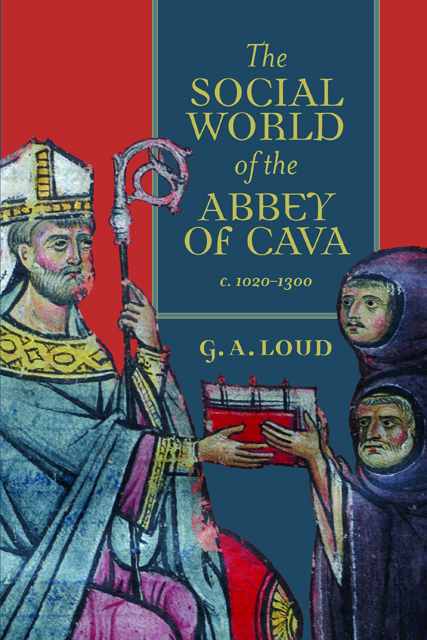Book contents
- Frontmatter
- Dedication
- Contents
- List of Maps and Charts
- Acknowledgements
- List of Abbreviations
- Note on the Organisation and Publication of the Cava Archive
- Dates
- Currency, Weights and Measures
- The Abbots of Cava, c. 1020-1300
- Maps
- I The Family of Vivus Vicecomes
- Introduction
- Part I The Abbey of Cava
- Part II Society and Economy
- Conclusions
- Appendix: Purchase and Expenditure by the Abbey of Cava, at Selected Periods between 1175 and 1230
- Bibliography
- Index
- Other volumes in Studies in the History of Medieval Religion
4 - Forgery, its Extent and Purpose
Published online by Cambridge University Press: 14 January 2023
- Frontmatter
- Dedication
- Contents
- List of Maps and Charts
- Acknowledgements
- List of Abbreviations
- Note on the Organisation and Publication of the Cava Archive
- Dates
- Currency, Weights and Measures
- The Abbots of Cava, c. 1020-1300
- Maps
- I The Family of Vivus Vicecomes
- Introduction
- Part I The Abbey of Cava
- Part II Society and Economy
- Conclusions
- Appendix: Purchase and Expenditure by the Abbey of Cava, at Selected Periods between 1175 and 1230
- Bibliography
- Index
- Other volumes in Studies in the History of Medieval Religion
Summary
It should already be clear from the previous discussion that forgery presents a significant problem for any study based upon the charters of Cava. The issue is rendered more problematic because the majority of Cava charters after 1090 remain unpublished, and no systematic study has been undertaken of the extent of such forgery, or – with rare exceptions – of individual sets of documents, from a particular benefactor or sets of benefactors, or relating to particular possessions or subordinate churches, which include a number of forgeries. Furthermore, even in the occasional instances where an attempt has been made to do this, the documents concerned have not been edited as a group, and thus it is difficult to undertake proper comparison, and the reader is forced to take what conclusions are offered very much on trust, especially where some or all of this particular sub-set remain unpublished. Some older editions of Cava documents do not indeed address the problem at all, even though there now appear to be serious doubts about the status of at least some of the documents concerned. Nor do scholars always agree as to the genuineness or not of particular charters. Most seriously, there has been a tendency among some Italian palaeographers both to assume that minor anomalies in diplomatic or script necessarily imply that a charter is forged and simply to classify such documents as ‘forged’ without addressing the implications of what that might mean. Yet medievalists as a whole are well aware that the blanket term ‘forgery’ covers a range of meanings, from minor interpolations into an otherwise genuine document through to complete invention. Even the latter might not be entirely without foundation. One of the strongest preoccupations of, particularly monastic, forgers was to provide evidence for properties and rights which actually did belong to them, but for which they lacked written title. Therefore properly to understand the phenomenon one needs not just to examine particular documents for alleged signs of forgery, but to provide a context and to explain why such a forgery might have been produced. In addition, the prevalence of forgeries at particular periods or within a particular context explains a great deal about the concerns of the men and the institutions producing them.
- Type
- Chapter
- Information
- The Social World of the Abbey of Cava, c. 1020-1300 , pp. 110 - 128Publisher: Boydell & BrewerPrint publication year: 2021

